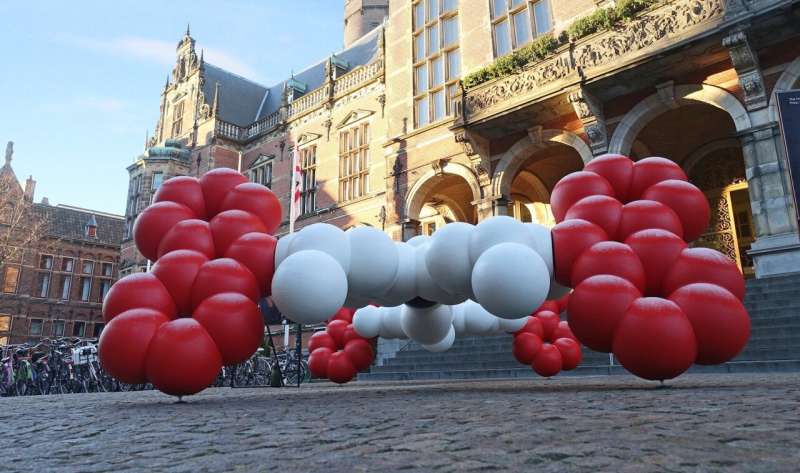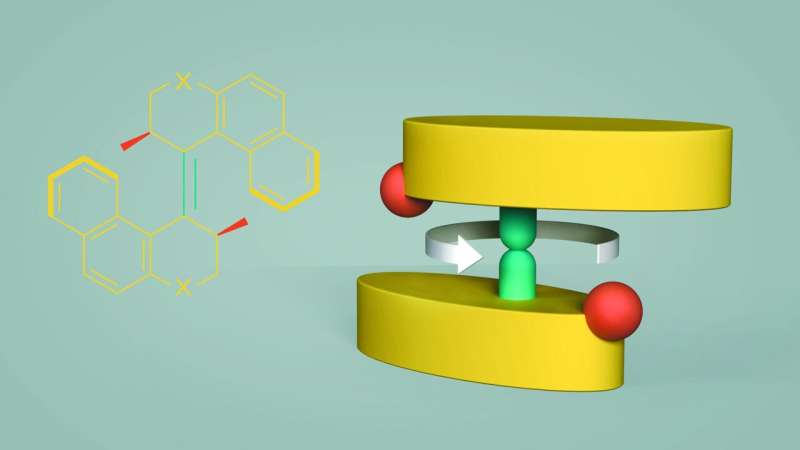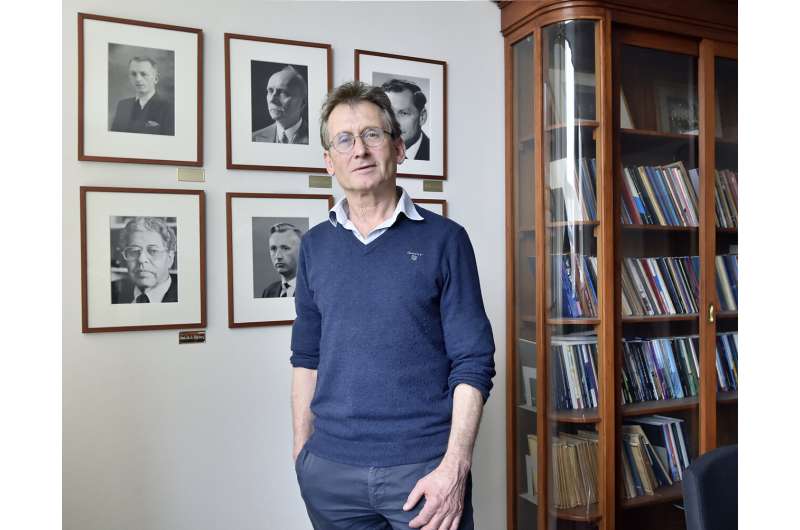This article has been reviewed according to Science X's editorial process and policies. Editors have highlighted the following attributes while ensuring the content's credibility:
fact-checked
peer-reviewed publication
trusted source
proofread
How a failed switch won the Nobel Prize

In 2016, University of Groningen Professor of Organic Chemistry Ben Feringa and two of his colleagues were awarded the Nobel Prize in Chemistry for having created "the world's tiniest machines." Feringa had built a light-driven motor comprising one single molecule. The scientific article describing this molecular motor was published 25 years ago, on 9 September 1999, in Nature.
The first motor molecule was actually conceived as a light-driven molecular switch. Feringa sought ways to make switches from single molecules in a quest to make ever smaller electronics. These switches should form "molecular bits," that could store information as zeros and ones by turning them on and off.
At the time, Feringa was not looking for a molecular motor, although he had previously speculated that such a tiny machine could exist. And as fortune favors the prepared mind, he recognized the odd results that his postdoc Nagatoshi Koumura presented.
Koumura had been researching such a "switch," but instead he found signs of a molecule that did not flip between two positions, but in which one part made a full 360-degree turn, pivoting on a molecular axis.
The motor molecule consists of an upper and a lower part that are connected via two carbon atoms that form the rotary axis, and is powered by ultraviolet light and heat.
When UV light shines on the molecule, it rotates 180 degrees. This rotation is reversible, but by applying heat as well, the shape of the molecule changes in the process. This shape change prevents reversal, so that the rotation moves in only one direction. Two of these light/heat steps produce a full 360 degree rotation.

Once Feringa's team had established how the motor molecule works, they started to improve it. The rotation speed was increased, and all kinds of modifications were made to make it run more efficiently. A motor is--of course--only useful when it can carry out work.
The first motors were made to freely float in a solvent, which meant they could not do much except stirring the solvent. Therefore, motor molecules were fixed to a surface, which allowed them to exert force on their surroundings.
In 2006, the Ben Feringa research group published a paper describing how light-driven motor molecules in a liquid-crystalline film could rotate a glass rod 10,000 times bigger than these motors. Also, fibers created from the light-driven motor molecules acted like muscles; they contract when one side is illuminated. And recently, Feringa's light-driven motors were used in a 3D-printed "butterfly." Shining UV light on the butterfly's wings changes their shape and results in a flapping motion—although it should be stressed that it does not fly.

A tiny car
In a special project, four motor molecules were connected to a chassis in order to create a four-wheel drive nanocar. It was completed and described in the journal Nature in 2011. The nanocar used a modified version of the molecular motor, which was powered by electricity generated from the surface it traveled on.
This project was carried out by a team that included Syuzanna Harutyunyan, Tibor Kudernac, and Nathalie Katsonis, who are now all full professors at the University of Groningen Stratingh Institute for Chemistry.
In the latest version of the molecular motor, efficiency was increased even further, making it easier to control its motions. When a batch of the older versions of the molecular motor was irradiated, they formed a mixture of motors at different stages of the rotation cycle. With the more efficient motor, it is possible to synchronize all motors and control them at each stage of the rotation cycle.
This new motor was used to change the color of a liquid crystal using light.
Light controlled drugs
Meanwhile, the switches that started all this have eventually made a comeback, not in computer chips but in medication. Light-driven switches can be used to switch on medication specifically at the site where they are needed. The medication will automatically switch off again after a couple of hours.
This could reduce the amount of side effects in the body. It also means that the medication, for example an antimicrobial, will have switched off when it leaves the body and enters the sewage system, preventing the development of antimicrobial resistance in the environment.
In his 2016 Nobel Prize acceptance speech, Feringa compared his molecular motors to the first airplane built by the Wright brothers. Although this was a far cry from modern jet planes, it was the beginning of a whole new era.
In 25 years, molecular motors have developed from quirky molecules into tools that can be used in materials science and medicine. The next 25 years will likely show if they can revolutionize our world in ways similar to the aviation industry.
Not just a motor guy
Building molecules has always been a passion for Feringa, and he used these skills to work on various topics. He has made several significant contributions to the field of catalysis, the development of compounds that will speed up a chemical reaction without being consumed in the process—important tools for the chemical industry.
He has also studied chirality, the "handedness" of molecules that have the same composition but are each other's mirror image, just like our left and right hands. In chemistry, the different "hands" can have very different properties, but chirality is also a characteristic of life. Studying this might tell us more about how life on Earth came into existence.
Journal information: Nature
Provided by University of Groningen




















